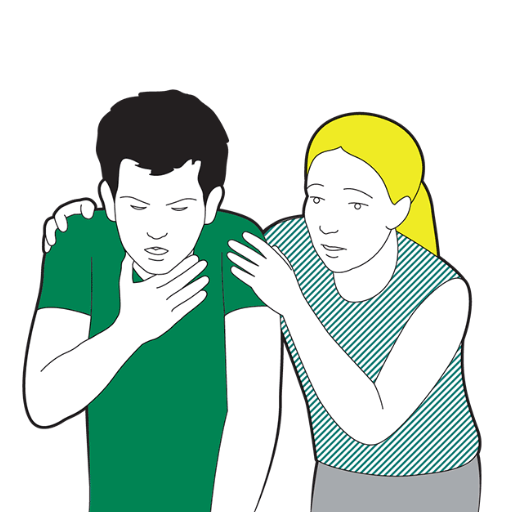
Choking is a life-threatening medical emergency that can occur at any time with little to no warning. Knowing how to properly evaluate an individual against the key signs of choking and providing the appropriate urgent response can help prevent suffocation. This article strives to provide a comprehensive guide to dealing with choking situations. In this article, we will assess the leading causes of choking, the signs and symptoms present, and the most basic first aid techniques that can be applied. Through abdominal thrusts, chest compressions, or aiding an unconscious individual, this article aims to provide readers with fundamental information so they may act appropriately in dire life-threatening scenarios. This post will provide you with critical first-aid rules which have the potential to save lives.
How to Recognize Signs of Choking in Adults?
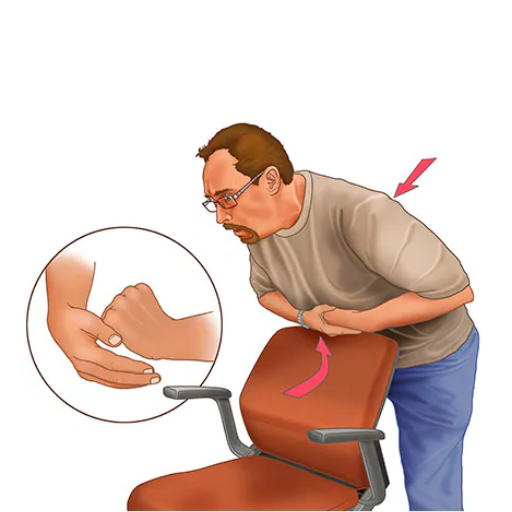
The act of choking entails various symptoms that are very telling. One of the more common symptoms is people holding on to their necks, which shows they are having difficulty breathing. Other symptoms include the inability to speak, breath, and cough. Moreover, the individual appearing pale to blue through panic and distress makes it even worse. If choking is partial, it can be accompanied by wheezing and high-pitched noises. It is essential to recognize these symptoms as soon as possible so that prompt measures can be taken.
What are the common signs of airway obstruction?
As far as I know, it is not airway obstruction that is a complete inability to speak, cough, or breathe and difficulty in doing any of those activities. One may clutch the neck, one crucial visual cue of desperation. Other signs may be audible breath sounds, stridor, or wheezing, which indicate that the airway is only partially obstructed. That person’s skin may become pale, bluish, or even gray because they are not getting enough oxygen, and their behavior is often panicky or agitated. These signs require attention immediately, hence swift recognition is important.
Can a choking person speak or cough?
A person’s ability to speak or cough while choking is contingent upon the level of obstruction. If the airway is somewhat transparent, the person might be able to attempt speaking, coughing, or wheezing, although these attempts will likely be ineffective. However, in the case of complete blockage, the individual will not be able to speak, cough, or even breathe as the airflow is completely obstructed. Some signs of a complete blockage are an individual being unable to make any sounds, grasping their neck to indicate choking, and cyanosis as a result of oxygen deprivation. Medical assistance, including performing the Heimlich maneuver or calling for emergency services, is crucial in these circumstances.
When should you suspect a complete blockage?
Complete blockage is suspected when speech, breathing, or coughing seems missing. Indicators include clutching one’s throat, presenting bluish skin around the lips or face, or even being panic-stricken. If all these symptoms are observed, it’s crucial to commence helping them at once. Their inability to make sound means immediate abdominal thrusts (Heimlich maneuver), along with medical assistance, would be appropriate. This is highly emergency-centered and life-threatening and thus needs to be practiced thoughtfully and carefully.
A patient is choking on an object to Take When Someone is Choking?
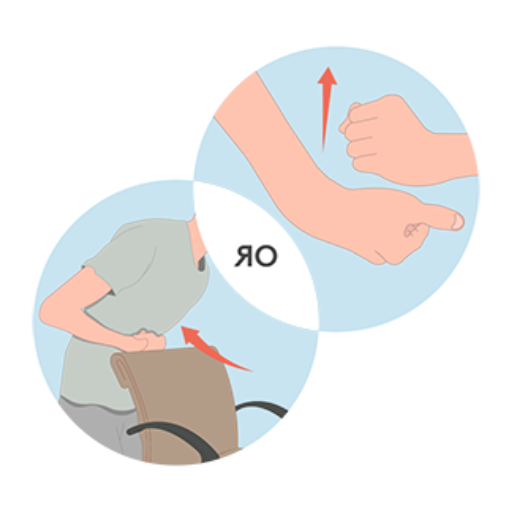
When a patient is choking on an object, immediate action is critical. Follow these steps:
- Confirm the Severity: Determine if the airway is partially or entirely blocked. If the person can cough forcefully, encourage them to continue coughing. This indicates a complete blockage if they cannot speak, cough, or breathe.
- Call for Help: If the blockage is complete, call emergency services immediately or instruct someone nearby to do so.
- Perform Abdominal Thrusts (Heimlich Maneuver):
- Stand behind the choking individual.
- Place your arms around their waist.
- Make a fist with one hand and position it just above their navel.
- Grasp the fist with your other hand and deliver upward and inward thrusts to expel the obstruction.
- Administer Back Blows (if necessary):
- If abdominal thrusts are ineffective, provide up to 5 firm back blows between the shoulder blades using the heel of your hand.
- Monitor and Respond:
- Continuously assess the patient's condition. If the patient loses consciousness, begin CPR and follow emergency protocols until professional help arrives.
These steps should be performed swiftly and decisively to prevent hypoxia and minimize the risk of complications.
How do you perform the "five back blows" technique?
To perform the "five back blows" technique effectively, follow these steps:
- Position the Person:
- Ensure the choking individual is slightly bent forward at the waist to maximize the gravitational force assisting the object's expulsion.
- Support the Chest:
- Use one hand to support the person's chest or lean forward over a stable object, such as a chair or your arm.
- Deliver Back Blows:
- Using the heel of your dominant hand, provide a firm strike to the area between the person's shoulder blades.
- Deliver each blow with moderate force, ensuring it is strong enough to dislodge the obstruction potentially but not excessively aggressive to cause injury.
- Evaluate After Each Blow:
- Pause briefly after each strike to check if the object has been expelled. If successful, discontinue the back blows.
- Repeat If Necessary:
- Continue delivering up to five back blows if the blockage persists. If the obstruction remains unresponsive, proceed to abdominal thrusts (Heimlich maneuver) or call for emergency help as required.
This technique is critical in clearing a partial or complete airway obstruction and must be executed carefully to avoid further complications. If the person becomes unconscious, initiate CPR immediately and follow emergency guidelines.
What is the proper way to do abdominal thrusts (Heimlich maneuver)?
The stomach thrusts against a person's abdomen to perform the Heimlich manometer. The first step is to confirm whether the individual is capable of standing alongside or sitting upright, in addition to establishing whether they can speak or make sounds. Once confirmed, I would clasp my arms around their waist from behind and hold one hand as a fist. With the thumb of the fist facing the abdomen, I will lower the fist and place it just above the navel. Along with this, I’d put my other hand atop my fist and thrust upwards, forcing air towards the mouth quickly and repeating thrusts until the object had been forcefully dislodged. If the person remains unresponsive, then it is time to call for help and commence CPR immediately.
When should you call for emergency medical help?
Their airway is blocked if the person is not breathing, coughing, or making sounds. In such circumstances, medical personnel should be contacted immediately. If the Heimlich maneuver fails and the individual goes unresponsive, do not make further attempts. Simply call 911 right away. While waiting, perform CPR until help arrives. Follow these same steps in case the individual is experiencing severe breathing difficulties, repeated coughing following asphyxiation, or if there is any injury to the ribs or abdomen after attempting the Heimlich. In such scenarios, take immediate action to ensure timely treatment is captured.
How to Perform First Aid for Choking in Different Scenarios?
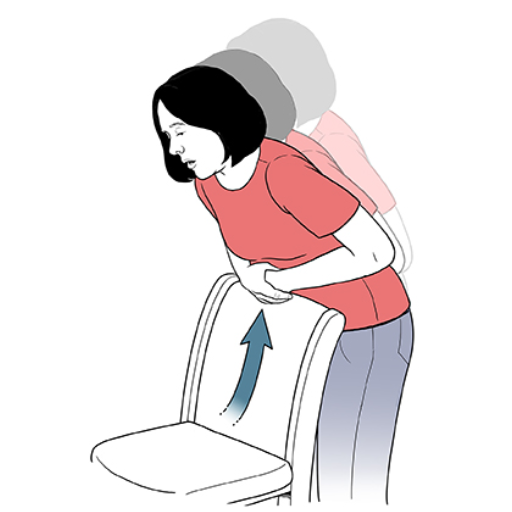
To Foster and Younglings Above 12 Months:
- Encourage Coughing - If the person can breathe and attempt to cough, encourage them to continue trying to expel the object independently.
- Release Back Blows - Stand beside and just behind the person, support their chest with one hand, and while doing so, deliver up to a maximum of five sharp back blows between their shoulder blades using the heel of your hand.
- Perform Abdominal Thrusts - If back blows are ineffective, stand behind them, encircle both arms around their waist, and perform a maximum of five abdominal thrusts (Heimlich maneuver) by pulling inward and upward just above their navel.
- Alternate Steps - Between the steps of back blows and abdominal thrusts, change until the obstruction is eliminated or help is received from specialists.
For Children Below 1 Year:
- Take Position of the Child - Support the child’s head and neck, and place them face down along your forearm so their body is angled downwards.
- Release Back Blows - Give up five firm back blows between the child’s shoulder blades with your hand’s heel.
- Conduct chest thrusts – With the infant in a supine position and the head tilted down, use two fingers to perform chest thrusts. Place your fingers along the center of the chest, just above the nipple line, and thrust five times.
- Repeat actions if needed – Continue the alternating pattern of back blows with chest thrusts until the obstruction is removed or medical assistance arrives.
For the pregnant and obese individuals:
- Shift the location of the push. Place your hands over the chest (above the base of the sternum) and push instead of thrusting through the abdomen.
- Continue with a rotation – Switch between chest thrusts and bag blows on the infant in case of an obstruction until the problem is resolved or the patient is temporarily stabilized.
For the unconscious individual:
- Get medical assistance - Call the emergency responders in a severe emergency.
- Perform chest compressions – Start with CPR using a set of compressions. Check on the air passage with every set and remove anything blocking it. Never attempt blind finger sweeps.
These instructions ought to be instigated without delay and with the utmost care for the safety of the rescuer and the person requiring assistance. Always seek professional medical attention after a first aid intervention for choking to determine whether any internal damage has occurred.
What to do if the person is choking on food?
- Determine the Severity
- Mild Obstruction: If the person can cough forcefully, encourage continued coughing to expel the obstruction. Do not interfere, but remain vigilant.
- Severe Obstruction: If someone cannot cough, speak, or breathe, act immediately by performing the following interventions.
- Perform Back Blows
- Stand to the individual's side or slightly behind.
- Deliver up to 5 firm back blows using the heel of your hand between the shoulder blades.
- Initiate Abdominal Thrusts (Heimlich Maneuver)
- Stand behind the person and wrap your arms around their waist.
- Make a fist with one hand and position it slightly above the navel but below the sternum.
- Grasp your fist with the other hand and perform quick, upward thrusts, applying sufficient pressure to dislodge the object. Repeat up to 5 thrusts.
- Repeat Sequence
- Alternate between 5 back blows and five abdominal thrusts until the blockage is cleared or the person becomes unresponsive.
- If the Person Becomes Unresponsive
- Lay the person on a firm, flat surface and immediately call for emergency help (911 or the local equivalent).
- Begin CPR (15 compressions followed by two rescue breaths if trained), checking the airway for visible obstructions between cycles and removing any foreign object before continuing. Avoid blind sweeps.
These actions provide a calculated approach to resolving choking incidents, emphasizing prompt and precise measures aligned with recommended safety and medical standards. Always ensure that a professional medical evaluation follows any choking event.
How do you handle choking on small objects?
If a small object gets stuck painfully in someone’s throat, I would first have them cough with some force in hopes that they dislodge the small object. If that proves futile and they cannot breathe, I would start to deliver back blows using my hand with my palm. I will strike with force between their shoulder blades and repeat this five times. While performing these back blows desperately, I would check if the object has come undone. If there seems to be no change, I will proceed with five abdominal thrusts. This entails repeatedly forming a fist and placing it just above their navel to apply firm upward thrusts. This process of five back blows and five thrusts would be repeated until the person either regains a responsive state or there is no sign of movement. In the case of the latter, I would position their body on a sturdy surface while simultaneously calling 911 for assistance, at which point I would also administer CPR. Life-threatening situations like these are extremely sensitive, so following these steps with the utmost precision is crucial.
What if you can't see the object causing the obstruction?
In the absence of sight towards the object causing obstruction, I would not attempt to blindly wipe my fingers through the mouth of the person as this would only push the object into the airway further. My objective would remain to perform the established cycle of 5 back blows and five abdominal thrusts to remove the object. If these steps fail and the subject becomes unresponsive, I would start CPR without hesitation, placing the bulk of my focus on chest compressions because these actions would create sufficient internal pressure to dislodge the object potentially. The chest compressions would be interspersed with breaths while frequently checking for obstructions. These actions automatically remove any blockages that are accessible without causing harm. Achieving these outcomes assists in following the emergency protocols from the medical practitioners, which permits a more systematic and accurate response.
What Should You Do If Initial First Aid Attempts Fail?
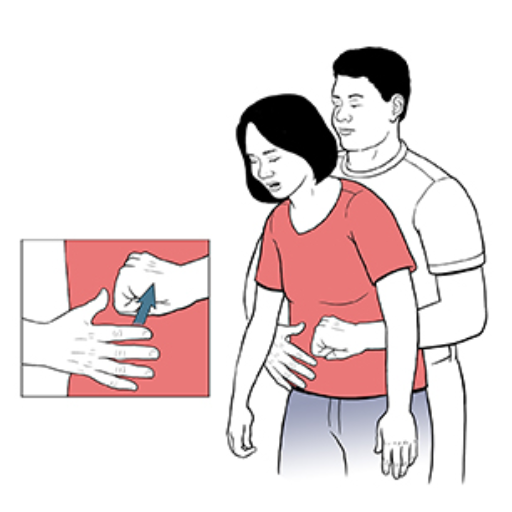
Should the first-aid measures not yield any result, it is of utmost importance to seek professional medical help. Keep performing the combination of back blows and the abdominal thrust maneuver (or chest thrusts for infants or abdomen-pregnant women) until trained personnel attend. In case the patient is unresponsive, initiate chest compressions immediately. Ensure to check the airway for any obstruction during the resuscitation process and try to take it out as long as it is reasonably safe. These measures focus on preserving blood flow and avoiding more damage until further aid is received.
When should you start CPR for a choking victim?
Doctors recommend that CPR starts if the patient does not respond while appearing to grasp for breath. Carefully lay the victim on a flat surface and begin with chest compressions. Circulation can be maintained in the brain while the obstruction is dislodged. Compression depth should be about 2 inches (5 cm) for adults and children over one year at 100 to 120 compressions per minute. For children under 12 months, compress the chest around 1.5 inches (4 cm) with two fingers but maintain the same rate. Between compressions, check the mouth for visible obstructions and remove them only if they are easy to get to. These protocol-driven procedures guarantee effective measures to save, in the worst case, any person from death due to cardiac arrest.
How to perform chest compressions on a choking adult?
When conducting chest compressions, an adult is entirely choking; I first ensure they are on a rigid surface. Next, I place my heel on my hand at the heart of the lower region of the sternum and center my other hand over the one on the sternum. After interlacing my fingers, I push down my arms while resting them straight. Employing a high velocity, I target a depth of two inches while doing the compressions. I adjust the depth accordingly with the range of 100 to 120 goal settings. During the compression set, I check for easily accessible obstructions. These obstructions, if any are visible, can only be reached by removing them.
What to do while waiting for emergency medical services?
I remain vigilant to the person's condition while waiting for EMS and attending to the person’s needs. If they are unresponsive and not breathing, I execute chest compressions at 100-120 compressions per minute to a depth of 5 cm for adults, making sure to let the chest completely recoil after every compression. For a choking person, I intersperse chest compressions with checks for obstructions in the airway, removal of which is only if they can be easily reached. If the individual starts to breathe spontaneously, I place them in recovery by rolling them onto their side while supporting the head, allowing an open airway, watching for any changes, and being ready. At the same time, calm is essential to provide emergency services with important information if required.
How Can You Prevent Choking Incidents?

Caution, instructional action, and context awareness are the three elements that help mitigate choking incidents. Always ensure food, in particular, is prepped in easily chewable morsels for younger children while encouraging them to chew thoroughly before swallowing. Talking or laughing whilst eating is not productive as it increases the risk of airway obstruction. All small toys and other potentially harmful objects should be kept out of children’s reach as these are potential choking hazards should they swallow them. Caregivers, in particular, should be guided on choking hazards and some basic first-aid procedures. Furthermore, observance during meals and play and teaching children how to eat mindfully can significantly alleviate the choking risk.
What are common choking hazards to be aware of?
Hazards of choking are present in foods, small objects, and materials that, if ingested, can block the airways. Among high-risk foods are hard candies, whole grapes, nuts, raw vegetables, popcorn, and hot dogs since they are both complex and slippery. These need to be cut into small pieces less than half an inch in diameter for children to prevent further risk of choking. Other choking hazards include toys with detachable parts, nonfood items like bottle caps, buttons, small batteries, and deflated balloons. Children below three years old are particularly in danger from objects less than 1.25 inches in diameter that can easily cause suffocation. Out of all these objects, coins are the most lethal when it comes to suffocation. Such small objects can also pose an additional danger in terms of chemical burns or poisoning. Following safety measures can help in preventing choking in children.
How do you supervise children to prevent choking?
As a rule, I avoid situations where children could choke by being fully attentive during meals and play activities. I also urge them to eat slowly and avoid talking while mouthfuls of food are in their mouths. I also always ensure that small objects and toys with smaller parts, coins, and batteries are out of reach. For younger children, I cut foods likely to choke them into smaller pieces to mitigate the risk. A safe environment and attentive supervision always considerably lessen choking risks.
What dietary precautions can help reduce choking risks?
As a preventative measure against choking, I ensure that food is skillfully prepared and consumed cautiously. I, for instance, slice significant or challenging foods such as apples, carrots, or meat into easily chewable pieces (about ½ an inch or smaller for children under 4 years). I also ensure that young children are not given particularly high-risk foods like whole grapes, nuts, popcorn, or hard candies. For myself, I make sure to eat at a slowed pace while chewing correctly without any distractions, such as talking or laughing at the same time. Infants and little children ideally should have soft and easy-to-swallow textures. Sticking to these precautions and being attentive during mealtime dramatically lessens the chances of choking.
References
- Mayo Clinic: Choking First Aid
- Johns Hopkins Medicine: Choking First Aid and Prevention
- MedlinePlus: Choking and Heimlich Maneuver
Frequently Asked Questions (FAQ)
Q: What are the signs and symptoms of choking?
A: The main signs of choking include the inability to speak or breathe, making high-pitched noises while trying to breathe, panicked behavior, clutching at the throat, bluish skin color, and eventually loss of consciousness. Recognizing these symptoms quickly is crucial, as choking is a medical emergency requiring immediate action.Q: How should I respond if I think someone is choking?
A: If you think someone is choking, ask them if they can breathe or speak. If they cannot breathe or the airway is completely blocked, stand behind the person and perform the Heimlich maneuver (abdominal thrusts). Give up to 5 sharp, upward thrusts to the abdomen to dislodge the foreign object.Q: What is the correct technique for performing abdominal thrusts?
A: To perform abdominal thrusts, stand behind the person and wrap your arms around their waist. Place a fist with one hand just above the person's navel. Grasp your fist with your other hand and give five abdominal thrusts by pulling inward and upward. Repeat this process until the object is dislodged or the person becomes unconscious.Q: When should I call 999 for a choking incident?
A: Call 999 immediately if the person loses consciousness, stops breathing, or is unable to remove the obstruction after performing first-aid techniques. Even if you successfully dislodge the object, seeking professional medical attention is advisable to prevent complications.Q: What should I do if the person choking becomes unconscious?
A: If the person becomes unconscious, carefully lower them to the ground and begin cardiopulmonary resuscitation (CPR) if you're trained. Continue CPR until emergency services arrive. If you can see the object in the person's mouth, try to remove it, but be careful not to push it further into the windpipe.Q: Are there alternative techniques to abdominal thrusts for specific individuals?
A: For pregnant women or obese individuals, chest thrusts are recommended instead of abdominal thrusts. To perform chest thrusts, stand behind the person and place the heel of your hand on the center of their breastbone, then give quick, forceful thrusts to the chest.Q: How can I reduce the risk of choking in everyday life?
A: To reduce the risk of choking, cut food into small pieces, chew thoroughly, and avoid talking or laughing while eating. For children, supervise mealtimes, avoid giving them small, hard foods, and keep small objects out of reach. Learning first-aid techniques like those recommended by the American Red Cross or the American Heart Association is also beneficial.Q: What should I do after dislodging a foreign object from someone's airway?
A: After successfully dislodging the object, monitor the person closely. Even if they seem fine, seeking medical attention is advisable as there might be unseen injuries or complications. If the person is unconscious, immediate medical evaluation is crucial.







 Login with Google
Login with Google Login with Facebook
Login with Facebook